TAN “CAIFAN” WEI YING
Wei Ying is a mixed vegetables rice connoisseur who can solve a Rubik’s cube while squatting his max. He is also an associate Psychologist who did his thesis on music in powerlifting at NUS. His keen interest in muscle dysmorphia (bigorexia) and sports psychology inspires him to bring more awareness on sports psychology and mental health into the realm of resistance training. With 7 years of experience in powerlifting, Wei Ying has contributed greatly to the community as the current President of Powerlifting NUS, the Vice-President of TheGymNation, an IPF referee. He also organized the first-ever Test of Strength (2018).
introduction

Michael has a dream. His dream is to be a billionaire. Or perhaps total 1000kg at the IPF Classic World Championships in the U59kg category and become world champion. The only problem is that his current total is 350kg. So Michael sets a goal for himself – double all his lifts and total 700kg in his next meet, which is three months away. He was filled with motivation and an innate desire to succeed at the start of the cycle, so he overloaded constantly, without a care for RPE. His training cycle went horribly wrong, constantly failing his top singles and sets that were set with the goal of totalling 600kg. He was constantly fatigued and had no desire for anything outside of powerlifting. He was clueless on how to proceed in the weeks preceding the competition. The day before the meet, Michael was crippled by pre-competitive anxiety and eventually bombed out of the meet. What went wrong? Was his desire to become a champion simply not enough?
Like Michael, many of us have set outlandish goals for ourselves, and perhaps we believe that with enough self-efficacy we can achieve them. This could not be further from the truth. All successful athletes set goals, which is a very important tool to have, but the difference is that they do so with productive goal-setting strategies. While Michael had a goal, he failed because he didn’t have a plan.
goals!
A goal is an “objective or aim of an action by attaining a specific standard of proficiency on a task, usually within a specified time frame” (Locke & Latham, 2002, p. 705). There are three types of goals – Outcome, Performance, and Process goals.
Outcome goals focus on the results of performance, such as achieving first place or beating a specific rival. This is something I’m sure many of you are familiar with, setting out to “win your next meet” or “hit 3 plates on the bench press”.
Performance goals focus on improvements over past performances, such as improving your previous meet’s total by 35kg.
Process goals target procedures during performance, such as ensuring full range of motion for every rep of your deadlift set.
Successful athletes often employ all types of goals, as each goal targets unique aspects that contribute to performance.
how do goals help?
So how exactly do goals help an athlete? There are several proposed theories on the pathways between goals and performance. The mechanistic theory (Locke & Latham, 2002) suggests that goals can direct the attention of athletes towards tasks that are important for performance. Goals also help to increase an athlete’s motivation and effort towards their goals during the less-exciting lull periods such as the off-season.
Goal setting also influences an athlete’s emotions prior to performance. According to cognitive theory (Burton, 1983), outcome goals of athletes can influence the levels of confidence, cognitive anxiety, effort, and performance. In contrast, performance goals help athletes form rational expectations, optimizing levels of anxiety, confidence and motivation which in turn enhances performance.
goal-setting guidelines
How should you set your goals? Here are several guidelines which you can use to apply in your next training cycle or session.
1. set sMART goals
SMART goals refer to goals that are Specific, Measurable, Achievable, Relevant and Time-bound.
Specificity refers to how detailed the goal is. Rather than just aiming to “improve” or “do your best”, consider what this entails. Examples of these include details such as weight, speed or the number of reps. (i.e., Squatting 200kg 5×5 at RPE 9).
Goals should also be quantifiable to allow for progress to be tracked and measured. Goals like “I want to be stronger” don’t leave much room for evaluation. Instead, “I want to increase my OHP by 5kg” allows for one to better keep track of their progress.
Achievability of goals are also extremely important. Michael set a goal that was too far out of his reach, considering his current level of strength. That is not to say that the goals should be easy and within reach, but they should be set reasonably outside of reach but achievable given enough time and training. One shouldn’t expect to achieve a goal outside of what is physically possible by the human body.
Relevant goals are goals that are relevant. Sounds simple, right? But many of us often make the mistake of not setting goals that are related to what they would like to accomplish. For example, a goal to increase your bicep curl max by 10kg wouldn’t really translate to much gains on your total and hence isn’t exactly relevant.
Lastly, goals should also be time-bound. A realistic timeline is required to determine if goals are achievable or not. In the example given, Michael wanted to double his total in three months, which is highly unlikely (and I stress, highly). Alternatively, if he set a goal of 20 years, that would not be realistic either since it wouldn’t give him a sense of urgency to achieve it.
2. short-term and long-term goals
A combination of short- and long-term goals are more effective than solely focusing on long-term goals (Kyllo & Landers, 1995), as both are required to maintain motivation and improve performance in athletes (Weinberg et al., 2001). Athletes often strive to set long-term goals such as winning a championship or setting new national records. Short-term goals can then facilitate this process by enhancing motivation and supplying a source of instant gratification when they are achieved. They also allow athletes to maintain their focus on their long-term goals by providing intermediate steps between the present and the future.
3. process, performance, and outcome goals
Like Michael, athletes often make the mistake of setting solely outcome goals as the success of an athlete has been too closely associated with winning. While outcomes definitely have a place in other aspects of sports (e.g., salary, placing), athletes have become socialized to only set outcome goals, failing to set process and performance goals. Outcome goals are less effective for performance (Burton et al., 2002), as our ability to control the outcome is often affected by the performance of others too. In the case of Michael, he wanted to achieve the title of world champion. While he could put in his best effort and even total 1000kg, he still might not win as he cannot control the performance of his opponent, who totalled 1001kg. Furthermore, overemphasis on outcomes could possibly lead to maladaptive cognitions such as “black-and-white” thinking (e.g., Either you achieve it or you are a failure) that can negatively impact an athlete’s well-being. However, that is not to say that outcome goals have no place in an athlete’s training. Employing all three types of goals have been shown to be beneficial for athletes (Burton et al., 2002). They are necessary to calibrate our off-season focus in the long-term and motivate us to train, but we should switch our focus on to performance and process goals nearer to competition.
So what should Michael do? In addition to his goal of totalling 1000kg and becoming world champion, he can set a process goal of “increased stability of the bottom position in the bench press by holding the bar motionless for a 1-count pause”, and a performance goal of increasing his total by 35kg in his upcoming meet.
4. positive vS negative goals
Rather than setting negatively-oriented goals (e.g., Don’t sink the bar when you bench), aim to set positive goals (e.g., Maintain chest tightness) whenever possible (Bell, 1983). By focusing on behaviours that should be performed rather than behaviours that should be avoided, athletes are locked-in on success rather than failure.
coaches' corner
For coaches, discussion of goals with athletes are of utmost importance. An initial meeting to discuss the goals of athletes and making sure they are realistic and rational should be carried out before any further work is done. Subsequently, more specific and intermediate goals are set up along with methods for evaluation of these goals.
It is also necessary not to implement too many goals at one time, as it can be overwhelming to monitor the progress and might even lead to a loss of interest in the athlete. Coaches can help athletes prioritize goals that are more important and moving on to other goals only when the initial ones are achieved.
conclusion
Something as simple as goal-setting is often overlooked in the achievement of peak performance, and it isn’t even bound by skill level! At the end of the day, outcome goals aren’t always the be-all and end-all. Don’t be afraid to lower your goals either if you feel they are no longer achievable (due to injury or other circumstances). As athletes and coaches, we should strive to implement goals that are in line with evidence-based guidelines, which can be a very effective tool when employed together with other psychological skills. Hopefully you’ve learned a thing or two and avoid the mistakes that Michael made.
references
Bell, K. F. (1983). Championship thinking: The athlete’s guide to winning performance in all sports. Englewood Cliffs, NJ: Prentice Hall.
Burton, D. (1983). Evaluation of goal setting training on selected cognitions and performance of col- legiate swimmers. Unpublished doctoral dissertation, University of Illinois, Urbana.
Burton, D., Naylor, S., & Holliday, B. (2002). Goal setting in sport. In R. N. Singer, H. A. Hausenblas, & C. M. Janelle (Eds.), Handbook of sport psychology (2nd ed.) (pp. 497–528). New York: John Wiley & Sons.
Kyllo, L. B., & Landers, D. M. (1995). Goal setting in sport and exercise: A research synthesis to resolve the controversy. Journal of Sport and Exercise Psychology, 17, 117–137.
Locke, E. A., & Latham, G. P. (2002). Building a practically useful theory of goal setting and task motivation: A 35-year odyssey. American Psychologist, 57(9), 705–717.
Weinberg, R., Butt, J., & Knight, B. (2001). High school coaches’ perceptions of the process of goal setting. The Sport Psychologist, 15, 20–47.

